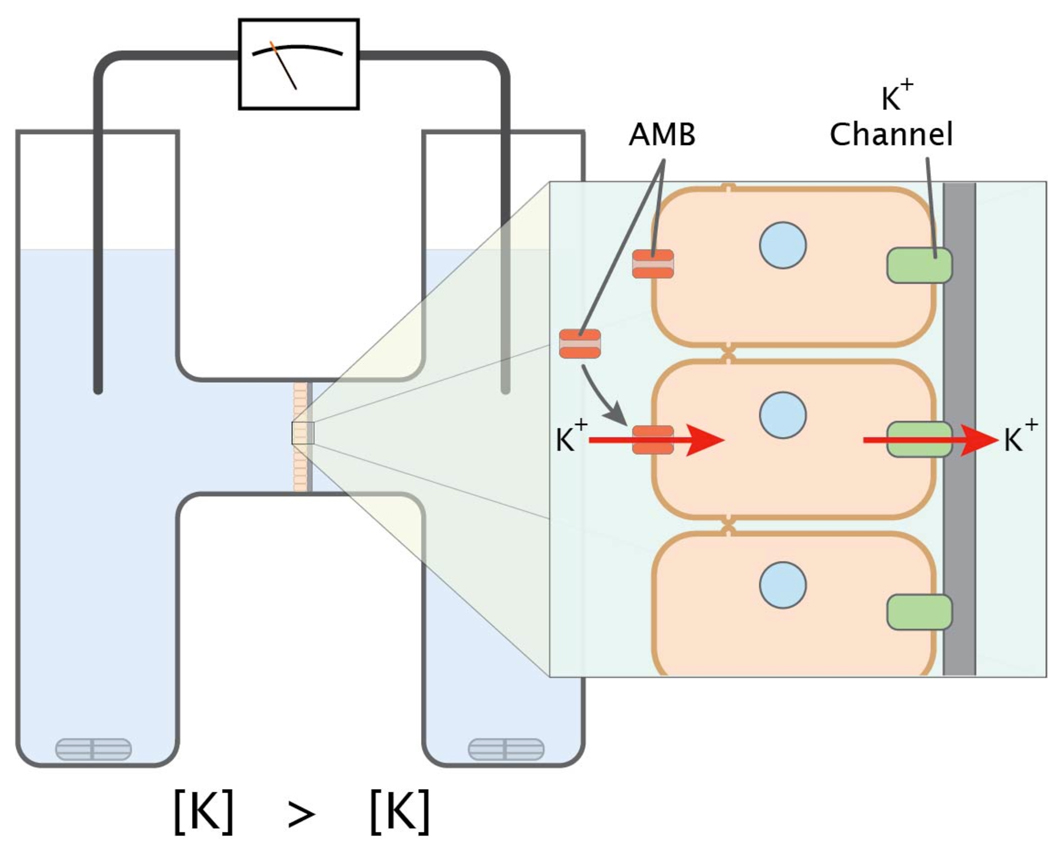Figure 1.
The Ussing chamber apparatus. The apparatus was used to quantify the permeability of epithelial monolayers by measuring the flow of ions from one chamber to the other. In this experiment Calu-3 cell monolayers are positioned so that the apical face is in contact with a buffer containing a high concentration of K+ while the basolateral reservoir has low potassium. When a permeabilizing agent (AMB/DOC) is added to the apical reservoir, K+ ions are driven by a concentration gradient into the cell through the pores formed by AMB and exit the cell via K+ channels on the basolateral cell membrane. The resulting trans-epithelial K+ current is dependent on the amphotericin-induced K+ permeability of the apical membrane.

